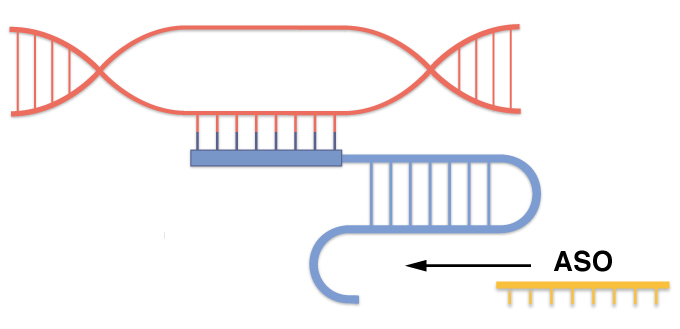
Research Activities
Research Activities
Publications
July 11, 2017
New drug candidate for a rare neurodegenerative disease

As for the legend: Candidate ASO reduced the number of neurons derived from SCA36 patients that showed RNA aggregates (foci), which are a hallmark of the disease.
for treating spinocerebellar ataxia 36.
Spinocerebellar ataxia 36 (SCA36) is an extremely rare disease with only 100 cases reported, and the plurality of patients comes from two geographical regions: Japan and Spain. Symptoms are first observed mid-life and involve ataxia (a loss of coordination and balance).
In its latest report, the Haruhisa Inoue lab at CiRA uses iPS cell technology to find a new drug candidate for SCA36, which Professor Inoue says is a repeat expansion disease.
"Repeat expansion diseases have RNA toxicity that kill neurons. The RNA has an abnormally long repeated sequence of amino acids caused by repeat expansions in genes," Inoue said.
The first repeat expansion disease was found about 30 years ago, but since then more than 20 repeat expansion diseases that degenerate the nerve system have been discovered.
Scientists in the Inoue lab had access to three SCA36 patients from whom they prepared iPS cells and iPS cell-derived neurons (iPSNs). All three patients and their iPSNs had repeat expansion in the NOP56 gene. The researchers then used the cells to test experimental drugs.
"Antisense oligonucleotides (ASO) work in iPS cells from patients with ALS and other neurodegenerative repeat expansion diseases. Because there is no effective treatment for SCA36, we studied ASO therapy on SCA36 patient cells," said Inoue.
ASO have been making gains as drug candidates for a diverse number of diseases including cancer, muscle dystrophy, and diabetes and reflect the role of RNA in many disorders. They work by binding to specific RNA, disrupting RNA processing in the nucleus.
Inoue's team tested five ASO in total. All reduced the number of pathological RNA foci cells by about 50%, but according to Inoue one distinguished itself from the rest.
"One ASO sustained the RNA levels of NOP56. Low NOP56 mRNA is found in a mouse model of ALS, and our patient iPS cells had lower NOP56 mRNA than healthy iPS cells," he said.
Inoue therefore preferred drugs that did not lower the RNA levels of NOP56.
However, all five ASOs could still be useful for the study of SCA36, because in addition to drug discovery, Inoue is using iPS cells to understand the development of SCA36.
"We do not understand how the repeat expansion causes the disease. Drugs that have different effects on the RNA could be useful for studying the pathogenesis," he said.
Paper Details
- Journal: Molecular Therapy - Nucleic Acids
- Title: Antisense oligonucleotides reduce RNA foci in spinocerebellar ataxia 36 patient iPSCs
- Authors: Kosuke Matsuzono1,2, Keiko Imamura1, Nagahisa Murakami1,3, Kayoko Tsukita1, Takuya Yamamoto1, Yuishin Izumi3, Ryuji Kaji3, Yasuyuki Ohta2, Toru Yamashita2, Koji Abe2, Haruhisa Inoue1
- Author Affiliations:
- Center for iPS Cell Research and Application (CiRA), Kyoto University, Kyoto, Japan
- Department of Neurology, Graduate School of Medicine, Dentistry and Pharmaceutical Science, Okayama University, Okayama, Japan
- Department of Clinical Neuroscience, Institute of Biomedical Sciences, Tokushima University, Tokushima, Japan






















